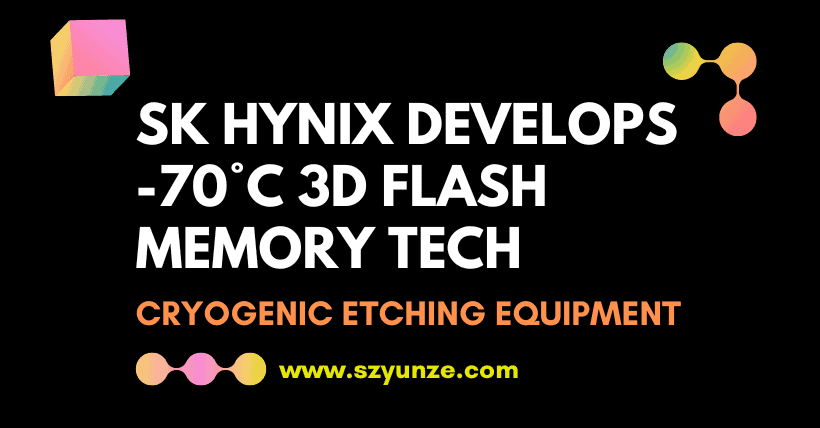As the number of stacked layers in 3D NAND continues to increase, manufacturers are also researching new production technologies to improve efficiency. SK Hynix is currently evaluating Tokyo Electron’s latest low-temperature etching equipment, which operates at a temperature of -70°C and is designed to produce next-generation 3D NAND with over 400 layers. The drilling speed of this low-temperature etching equipment is three times faster than traditional tools, making it very useful for high-layer-count 3D NAND.
According to The Elec, SK Hynix is sending test wafers to Tokyo Electron’s laboratory rather than importing the equipment directly, indicating that they are assessing the new equipment’s capabilities. The current etching process operates at temperatures between 0°C and 30°C, whereas Tokyo Electron’s etching equipment operates at a low temperature of -70°C, which is a stark contrast. Based on their research data, the new etching machine can perform high-aspect-ratio etching to a depth of 10 micrometers in 33 minutes, which is more than three times faster than existing tools. This result is a significant technological advancement that greatly improves 3D NAND production efficiency.
SK Hynix’s current 321-layer 3D NAND reportedly uses a triple-stack structure. With Tokyo Electron’s new equipment, it’s possible to build 400-layer 3D NAND using either a single- or double-stack method, which significantly improves production efficiency. However, whether it will succeed depends on the equipment’s reliability and performance consistency.
Another reason SK Hynix is considering adopting low-temperature etching equipment is to reduce carbon emissions. The current etching process uses carbon fluoride gases like carbon tetrafluoride and octafluoropropane, which have high Global Warming Potential (GWP) values of 6030 and 9540, respectively. However, Tokyo Electron’s new generation of etching equipment uses hydrogen fluoride gas, which has a GWP of less than 1, significantly reducing greenhouse gas emissions.
Samsung is also verifying this new technology. Unlike SK Hynix, Samsung directly introduced Tokyo Electron’s new equipment for testing.
Related:
- Key Duties of Equipment Engineers in Semiconductor Fabs
- Essential Equipment Needed to Start a New Fab Plant
- Here’s Why Wafer Carriers Always Hold 25 Wafers Only
- Dry Etching Technology: Principles, Features and Uses
- Semiconductor Fab Roles Require 24h Emergency Access
- 2025 Lessons from South Korea Semiconductor Sector
- Global Wafer Fab Equipment Revenue Hits $133 Billion in 2024
- ASML CEO: China Chip Manufacturing Lags 10-15 Years
- Semiconductor Holes: How They Work & Why They Matter

Disclaimer: This article is created by the original author. The content of the article represents their personal opinions. Our reposting is for sharing and discussion purposes only and does not imply our endorsement or agreement. If you have any objections, please contact us through the provided channels.



